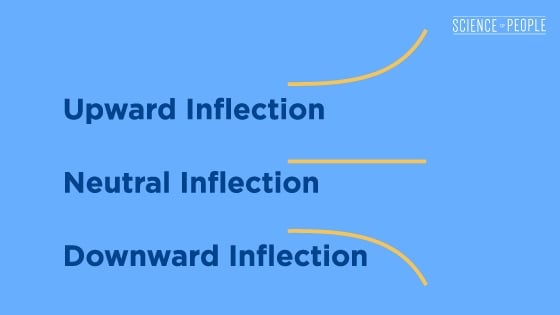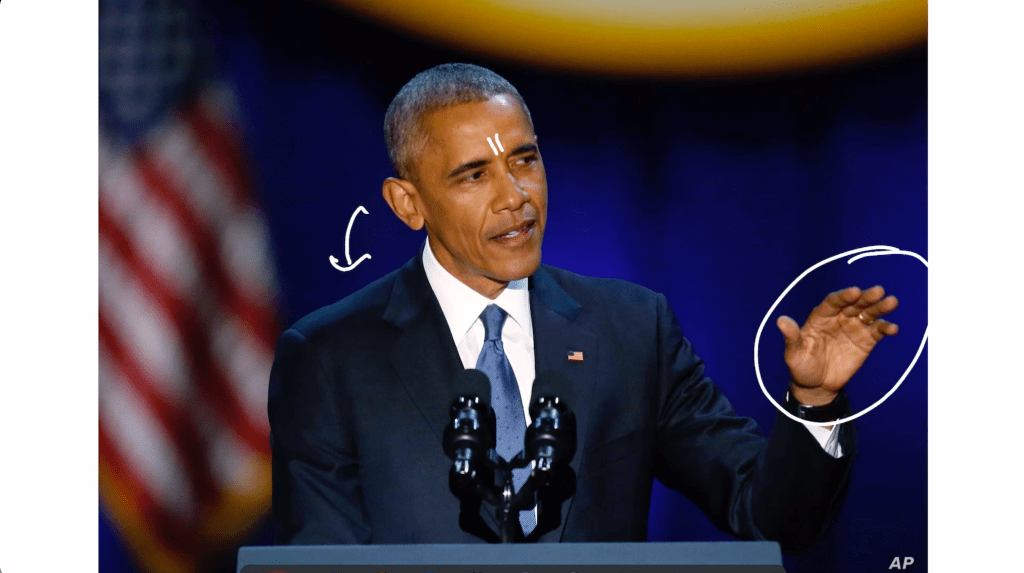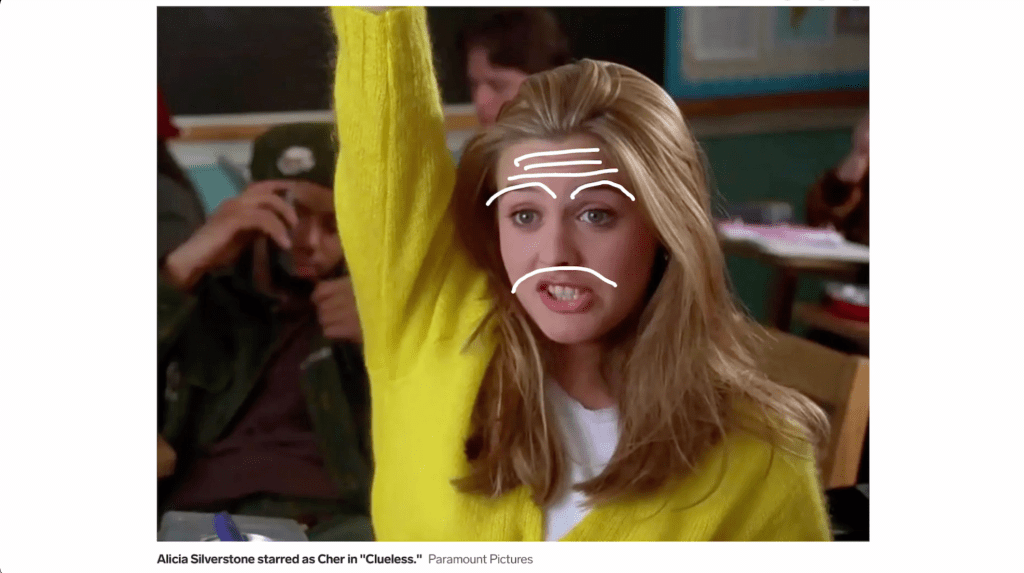This article is part of our cues guide. Click here for more.
- Dwayne Johnson: The Most Charismatic Man Ever, Analyzed
- Britney Spears’s Body Language Red Flags (Analyzed)
- 7 Cues Morgan Freeman Uses to Instantly Be More Likable
- How Justin Bieber Uses Body Language to Remain Cool & Calm
- Why Princess Diana’s Hidden Body Language Cues are So Intriguing
- Learn the Secret to President Obama’s Vocal Charisma
- How to Be a Respectable Alpha Male (With Real-Life Examples)
I recently watched a comic doing a bunch of celebrity impressions.
And I noticed that as he did the celebrity impressions, the shape of his face transformed: his lips changed, his neck shifted up, his breathing hushed, and he even moved his eyebrows more like the celebrity—all this just to change his voice!
Your physical appearance can affect the way you sound.
In this article, I’m going to break down two types of speech and show you why people sound the way they do.
Barack Obama’s Vocal Authority
Have you ever noticed how Barack Obama seems to command attention? It’s as if every word he says lingers on, and the silence between his words gives power to what’s to come.

The Downward Inflection
A key characteristic of why this happens is his downward inflection.
When Obama speaks, his voice tends to go down at the ends of his sentences.
Why is this important?
A downward inflection gives off an authoritative tone.
This is critical if you want to give off that famous “authoritative” tone. Inflection is an important cue to what we are thinking.

An upward inflection is when we go up at the ends of our sentences, like we are asking a question. It signals questioning or insecurity.
A neutral inflection is when our tone stays the same. It is used most often and signals we are saying something with no added effect.
A downward inflection is when our tone goes down at the ends of our sentences. It signals authority and confidence.

In my book Cues: Master the Secret Language of Charismatic Communication, I show research about how our inflection impacts people’s perceptions of us.
You might also notice Obama speaks with a lot of space in the middle part of his mouth. And when he’s speaking, you can almost hear the “hollow” in his voice.
To achieve this effect, you can create more space between your tongue and the roof of your mouth. This creates a little bit more resonance in your voice—try it out!
Downward Motion
Along with that downward inflection, Obama tends to pull his eyebrows down in what is known as a “furrowed brow” (timestamp 2:56). When he does this, you’ll see two vertical lines appear between his eyebrows.

Just like the downward inflection, this is another downward cue that commands attention. It’s also a partial anger microexpression. Research has found that making an anger microexpression makes us look stronger.
You might also notice his lips tighten and his lower eyelids harden—all part of what we’d normally do if we’re feeling angry (timestamp 5:25).
Obama also tends to tilt his head downward and use hand gestures in a downward direction (like the downward-facing palm), which further emphasizes his authority.

Action Step: Downward inflection and downward gestures indicate authority. Use them wisely and only when you want to command respect. For example:
- when leading a meeting
- when you need people to listen quickly—“Quiet down,” “Exit the building,” or “Listen up!”
- when you are sharing a critical point in a presentation
The Power of Pause
How often do you pause during your conversations?
The pause can make people nervous, but it shouldn’t! Pauses cause us social anxiety and are a people pleaser’s worst nightmare.
However, powerful people use the pause to their advantage.
When we are comfortable enough to take pauses, that shows that we are confident in our speech. And people who use pauses—especially mid-sentence pauses—give the listener a moment to think.
One study by Columbia University even found that pauses correlate more with truthful speech than with deceptive speech.
Pausing also indicates a lot of confidence and power as it subcommunicates that the speaker isn’t feeling rushed to talk.
Watch almost any speech Obama gives and you’re bound to find bountiful amounts of pauses.
Cher in Clueless (portrayed by Alicia Silverstone)
Let’s look at the opposite end of the spectrum with the character Cher.
If you’ve ever had the pleasure of seeing the movie Clueless, you know it’s a 1995 American teen comedy movie—a total chick flick.
And you’ll notice there are certain characteristics you might want to completely avoid if you want to be taken seriously. Note that these did make her character (and entire way of speaking) quite famous, but for the wrong reasons!
Uptalk
If you watch the movie, you’ll notice a lot of characters have a very distinct kind of “Valley girl” talk or uptalk.
Uptalk, or upspeak, is the opposite of vocal authority.
In fact, it is the highest you can be in vocal warmth (a.k.a. friendliness). Some would even call it vocal silliness because almost everything you say with uptalk comes out as a question:
- “Let’s eat dinner” becomes “Let’s eat dinner?”
- “I finished the project” becomes “I finished the project?”
- “I love you” becomes “I love you?”

See what I mean?
What happens here psychologically is that when we use the question inflection, the listener begins to question the statement too!
Which leads me to one of the biggest mistakes I see entrepreneurs and business owners make: giving away their vocal authority.
NEVER give away your vocal power when making a sale or trying to land a client!
All too often I hear a salesperson say something like:
- “I’d really love for you to buy my product?”
- “I’m confident you’ll love it?”
- “The price of my product is $5,000?”
When you ask your price, you are begging people to negotiate for you.
Action Step: Be sure to listen to your outgoing voicemail message. Make sure you are not accidentally using the question inflection.
“Hi?
This is Vanessa?
Thanks for calling?
Leave a message?”
Yikes.
Up Body Language
So all this brings me back to Cher, who is super friendly and goes up at the ends of her sentences. You’ll notice if you observe her character in action that she also goes up with her body language.
Her arms, her eyebrows, her lips, her forehead—everything is up. You can even see the lines I drew on her forehead going up (timestamp 9:05):

And this contributes to her overall “upness.”
I want to caution you that if you want people to take you seriously, you should be careful not to use too many “up” vocal characteristics.
Action Step: Do you notice yourself using too much up, up, up? If you want to be taken seriously, you don’t need to go down; just try pivoting to neutral.
Up vs. Down—Which One Should You Use?
After reading this article, you might think that using the downward inflection is always the right thing to do.
But the reality is…
If we’re trying to play nice or be more likable, we tend to use upward gestures. But if we want to command power and authority, we tend to go downward—neither right nor wrong.
But the bottom line is, you should be using your cues to your full advantage, whether up or down!
If you’re not showing any cues at all, it makes it very hard for people to pay attention to you.
So I want you to record a video of yourself, count all of your cues, and see which side you tend to err on.
And while you’re at it, learn these pro tips to speak with confidence and sound better. Because who knows? This may be the best thing you’ve read to really gain your confidence.

I think it’s very hard to purposely change your speaking style. You can do it for a while then without realizing it you’re back to your normal style.
I also think for the most part Obama’s speaking style is just natural, it’s just the way he speaks.
Interestingly, in a televised interview the interviewer asked Obama what is the thing he would change about himself, if he could. He responded that he would change the way he pauses when speaking.
I think it’s very hard to purposely change your speaking style. You can do it for a while then without realizing it you’re back to your normal style.
I also think for the most part Obama’s speaking style is just natural, it’s just the way he speaks.
Interestingly, in a televised interview the interviewer asked Obama what is the thing he would change about himself, if he could. He responded that he would change the way he pauses when speaking.
I think it’s very hard to purposely change your speaking style. You can do it for a while then without realizing it you’re back to your normal style.
I also think for the most part Obama’s speaking style is just natural, it’s just the way he speaks.
Interestingly, in a televised interview the interviewer asked Obama what is the thing he would change about himself, if he could. He responded that he would change the way he pauses when speaking.
What a wonderful and informative video! 🙂 I noticed and appreciated Obama’s speaking style from the beginning. The pauses and slower speaking attracts attention most to me. I noticed less of the physical gestures. You see that he really thinks about what he will say and means it. So, so unlike the president after him 🙁
Vanessa, I’d like to see you analyze Trump’s style.
What a wonderful and informative video! 🙂 I noticed and appreciated Obama’s speaking style from the beginning. The pauses and slower speaking attracts attention most to me. I noticed less of the physical gestures. You see that he really thinks about what he will say and means it. So, so unlike the president after him 🙁
Vanessa, I’d like to see you analyze Trump’s style.
What a wonderful and informative video! 🙂 I noticed and appreciated Obama’s speaking style from the beginning. The pauses and slower speaking attracts attention most to me. I noticed less of the physical gestures. You see that he really thinks about what he will say and means it. So, so unlike the president after him 🙁
Vanessa, I’d like to see you analyze Trump’s style.
It was helpful to see and hear the contrast between Uptalk and downtalk and pointing out gestures that accompany each. I appreciate that you always give strategies for ways the concepts can help us improve our speaking.
It was helpful to see and hear the contrast between Uptalk and downtalk and pointing out gestures that accompany each. I appreciate that you always give strategies for ways the concepts can help us improve our speaking.
It was helpful to see and hear the contrast between Uptalk and downtalk and pointing out gestures that accompany each. I appreciate that you always give strategies for ways the concepts can help us improve our speaking.